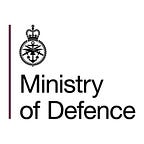NATO explained: 13 things to know
NATO is the cornerstone of our defence and has been at the heart of the UK since 1949. Here are 13 things you need to know:
A secure European region is a secure Britain.
That’s why the Royal Navy makes waves securing the seas as part of NATO’s maritime groups.
It’s why the British Army trains with allies day and night, deployed overseas with a presence for deterrence.
Meanwhile, our aircraft take flight overhead, policing the skies to protect our allies.
13 things to know about NATO:
1. What is NATO?
The North Atlantic Treaty Organisation (NATO) is a military and political alliance of 30 countries across Europe and North America. The UK is a founding member of the organisation and has supported its allies for over 70 years since its formation in 1949.
There are currently 30 members in NATO, with North Macedonia the latest to join in 2020.
Take a look at the full list of NATO countries here
2. Article 5: An attack on one is an attack on all
Article 5 of the Washington Treaty (NATO’s founding document) states that “an attack or provocation on one of its member states is considered as an attack against all.” This is known as collective defence and has come into play once — in response to the 9/11 terrorist attacks in 2001.
3. A political and military alliance
NATO’s purpose is to guarantee the freedom and security of its members through political and military means.
NATO remains committed to the peaceful resolution of disputes, with the military having the power to undertake crisis-management operations, which are carried out under Article 5 of the Washington Treaty.
4. NATO is committed to the peaceful resolution of disputes
NATO sees violence as a last resort, with the aim to peacefully resolve disputes that take place. If these efforts fail, NATO has the military power to undertake crisis-management operations, which are carried out under the collective defence clause of NATO’s founding treaty — Article 5 of the Washington Treaty or under a United Nations mandate, alone or in cooperation with other countries and international organisations.
5. Ready to defend freedom
The UK Armed Forces take a leading role in various NATO operations and exercises across the globe. An example of this was the successful Exercise Trident Juncture in 2018 in Estonia.
NATO nations continuously train to prepare to defend freedom from any threat from any direction.
6. Who are NATO?
NATO is based in Brussels, Belgium with the former Norwegian Prime Minister Jens Stoltenberg as the current Secretary-General. NATO has bases across Europe and Northern America, such as the Allied Maritime Command HQ in Northwood, North London.
Every day, member countries consult and take decisions on security issues at all levels and in a variety of fields.
7. Defence Spending
All members of NATO must commit to spending at least 2% of their GDP on defence. The UK fully meets and exceeds this commitment.
Each year, updated tables with nations’ defence expenditures are published on the NATO website.
8. Partner Nations
NATO has partner relationships with nations that are not full members of the organisation. For example, the 1994 Mediterranean Dialogue formed a relationship with NATO and Egypt, Israel, Jordan, Mauritania, Morocco and Tunisia. It seeks to contribute to security and stability in the Mediterranean.
9. Together we are stronger
Collectively, NATO members comprise at least 50% of the world’s total GDP and can call on over 3 million men and women on active service.
UK Armed Forces personnel are deployed on NATO operations all over the world, demonstrating their ability to operate together as one.
Exercises also take place each year which show NATO partners integrating together, becoming a stronger force to help keep threats at bay.
10. Protecting our allies by securing the skies
As part of efforts in air policing, NATO defends airspace over countries such as Albania, Luxembourg, Iceland, Slovenia, Latvia, Lithuania and Estonia on a 24/7 basis, 365 days per year.
These countries do not have their own air capabilities and have formed agreements with allies within NATO to be protected. The Royal Air Force regularly take part in this.
11. The “Open Door” Policy
The Open Door Policy is a founding principle of NATO and means that any country in the Euro-Atlantic area is free to join NATO as long as they are prepared to meet the standards and obligations of membership, they contribute to the security of the Alliance and Shares NATO’s values of democracy, reform and the rule of law.
Since 1949, NATO’s membership has grown from 12 to 30 countries. In 2020 we welcomed North Macedonia as our 30th member of the NATO Alliance.
12. Cyber defence
Cyber defence is part of NATO’s core task of collective defence.
Cyber threats to the security of the Alliance are becoming more frequent, complex and destructive. NATO will continue to adapt to the evolving cyber threat landscape.
NATO and its Allies rely on strong and resilient cyber defences to fulfil the Alliance’s core tasks of collective defence, crisis-management and cooperative security. The Alliance needs to be prepared to defend its networks and operations against the growing sophistication of the cyber threats and attacks it faces.
13. Women, Peace and Security
NATO recognises the disproportionate impact that conflict has on women and girls, the vital roles women play in peace and security, and the importance of incorporating gender perspectives in all that the Alliance does.
The Women, Peace and Security agenda was launched on 31 October 2000 with the adoption of United Nations Security Council Resolution 1325 and now includes nine additional Resolutions.
NATO’s approach to the Women, Peace and Security agenda is framed around the principles of integration, inclusiveness and integrity.
